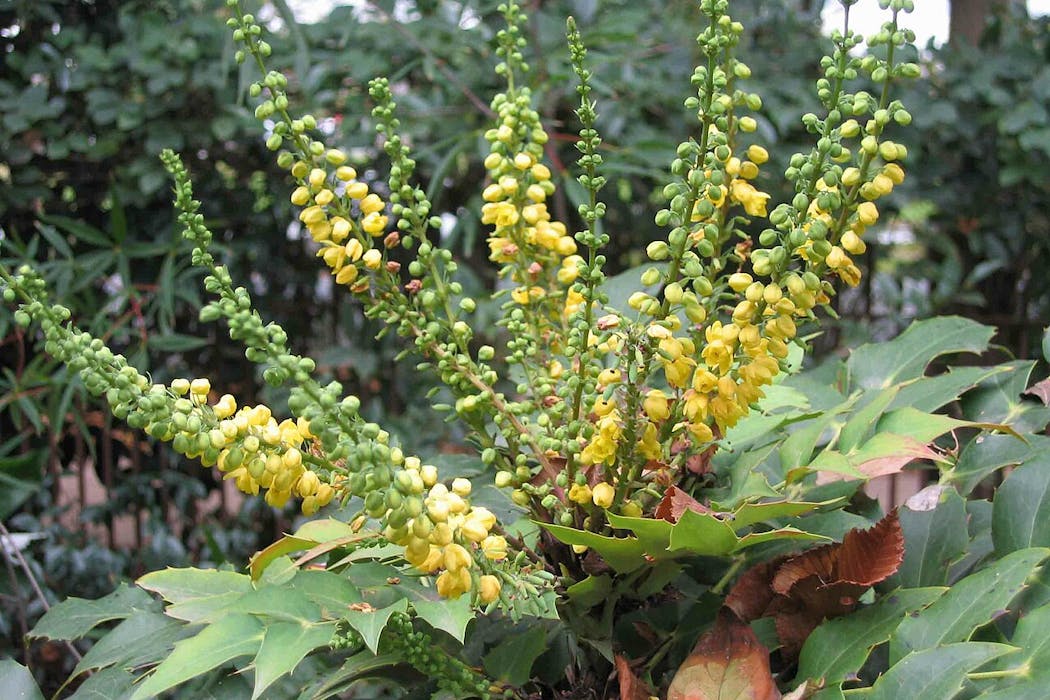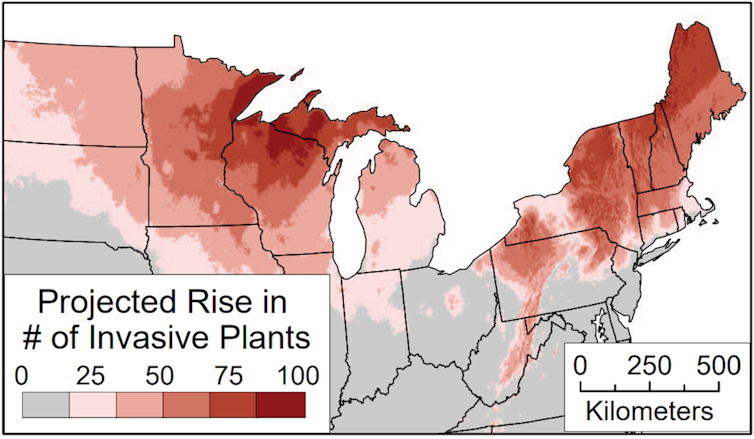From invasive species tracking to water security – what’s lost with federal funding cuts at US Climate Adaptation Science Centers
- Federal funding cuts for US Climate Adaptation Science Centers have left nine regional centers without funding, threatening to halt critical research and projects that help fish, wildlife, water, land, and people adapt to climate change.
- The centers were working on various projects, including tracking invasive species, protecting water supplies, improving wildfire forecasting, and developing sustainable agriculture practices, which are now at risk due to the loss of funding.
- Specifically, three regional centers covering the South Central, Pacific Islands, and Northeast regions were left unfunded, with projects such as developing high-resolution climate projections for assessing future changes to groundwater recharge and ecologically sensitive springs being put on hold.
- The loss of funding also means that critical research on invasive species is stalled, with scientists unable to map invasive species’ movement and share invasive species research across the region, leaving America and Americans more vulnerable to climate change.
- Despite the challenges, there is hope that the work will eventually continue, as Congress has proposed budgets that recommend fully funding the Climate Adaptation Science Centers, and natural resources managers and the public have consistently told their elected officials that the work is important.

When the Trump administration began freezing federal funding for climate and ecosystem research, one of the programs hit hard was ours: the U.S. Geological Survey’s Climate Adaptation Science Centers.
These nine regional centers help fish, wildlife, water, land – and, importantly, people – adapt to rising global temperatures and other climate shifts.
The centers have been helping to track invasive species, protect water supplies and make agriculture more sustainable in the face of increasing drought conditions. They’re improving wildfire forecasting, protecting shorelines and saving Alaska salmon, among many other projects.
All of this work happens through partnerships: Scientists, many of them affiliated with universities, team up with public and private resource managers – the people who manage water supplies, wildlands, recreation areas, shorelines and other natural resources – to develop the research and solutions those managers need.

Regional Invasive Species and Climate Change Network, CC BY
But in spring 2025, after 15 years of operation of the centers, the president’s proposed federal budget zeroed out funding for them. Federal workers at the centers were threatened with layoffs.
Three of the nine regional centers – covering the South Central, Pacific Islands and Northeast regions – were left unfunded when the Office of Management and Budget withheld and then blocked funds Congress had already appropriated.
In spite of these challenges, we have hope that the work will eventually continue. Congress’ proposed budgets in both the U.S. House and Senate recommend fully funding the Climate Adaptation Science Centers, and there’s a reason: Natural resources managers and the public have consistently told their elected officials that the work is important.
Here are three examples of projects in regions where funding has been blocked that show why resource managers are speaking up.
Sustainable water supplies in arid lands
In south-central Texas, the Edwards Aquifer Authority is responsible for providing sustained water resources for 2.5 million people in cities such as San Antonio and Uvalde. It also maintains the groundwater-fed springs that support threatened and endangered species.
In recent decades, however, both heavy rainfall and prolonged, intense droughts have increased uncertainty about how much water will be available from the aquifer.
At the South Central Climate Adaptation Science Center, researchers from the University of Oklahoma teamed up with the aquifer authority to develop high-resolution climate projections for assessing future changes to groundwater recharge and ecologically sensitive springs.
The climate projections are helping the authority determine whether its existing drought-mitigation practices are effective for sustaining freshwater springs and groundwater levels.

Adrienne Wootten
Losing funding for the Climate Adaptation Science Center means this technical guidance for water management and many other projects in the region are no longer available.
Stalled science doesn’t just hurt Texas. Many arid and semi-arid regions of the U.S. rely on aquifers to provide water supplies for homes, businesses and agriculture, and they need this type of research to maintain water security.
Solutions for agriculture and fire protection
On the Hawaiian island of O’ahu, up to 40% of agricultural land is unmanaged and unplanted pasture that is often invaded by non-native grasses. These grasses increase fire risk as the islands face more intense and longer-lasting droughts.
The Pacific Islands Climate Adaptation Science Center has been working on a solution to help restore fallow lands through agroforestry, in which farmers grow crops among trees, mirroring Indigenous practices.

Leah Bremer/University of Hawaii at Mānoa Institute for Sustainability and Resilience
Climate Adaptation Science Center researchers at the University of Hawai’i Mānoa partnered with Kākoʻo ʻŌiwi, a nonprofit organization that is restoring Indigenous food systems, to identify lands that will remain suitable for agroforestry even under worsening drought caused by climate change. The research has shown how management practices can increase soil health and increase the soil’s carbon storage.
Since 2019, researchers have taught hundreds of volunteers from the community and student groups about restoration practices that include food production, forest conservation and climate resilience.
Lost funding for Climate Adaptation Science Centers put the brakes on science that supports local communities.
Managing invasive species in a warming world
Invasive species cost the U.S. economy an estimated US$10 billion a year in damage to crops, forests and ecosystems. At the same time, climate change is increasing the range of many invasive species and making them harder to control.

Regional Invasive Species and Climate Change Network, CC BY
In 2016, researchers from the Northeast Climate Adaptation Science Center at the University of Massachusetts Amherst learned that resource managers were concerned about how climate change would affect invasive species ranges. To understand and address the needs of resource managers, Climate Adaptation Science Center researchers created the Regional Invasive Species and Climate Change Network, which has become a primary source for mapping invasive species’ movement and sharing invasive species research across the region.
Climate Adaptation Science Center researchers conducted a series of projects to identify invasive plants expanding into northern and southern New England and mid-Atlantic states. The results have helped the state of Massachusetts update its invasive plant risk assessment and expanded regulators’ lists of invasive species to prohibit from sales in New York and Maine.
States recently asked the center’s researchers to develop a database of current and emerging invasive plants across the Northeast to help them build consistent and proactive defenses against emerging invasive species. Stalled funding has also stalled this project.
These are the kind of real-world solutions that federal funding cuts are stopping. When that work disappears, it leaves America and Americans more vulnerable to climate change.
![]()
Bethany Bradley receives funding from the US Geological Survey as the University Director of the Northeast Climate Adaptation Science Center.
Adrienne Wootten previously received funding from the US Geological Survey for research projects through the South Central Climate Adaptation Science Center and is currently engaged in research with the Edwards Aquifer Authority.
Ryan Longman receives funding from the US Geological Survey as the University Director of the Pacific Islands Climate Adaptation Science Center
